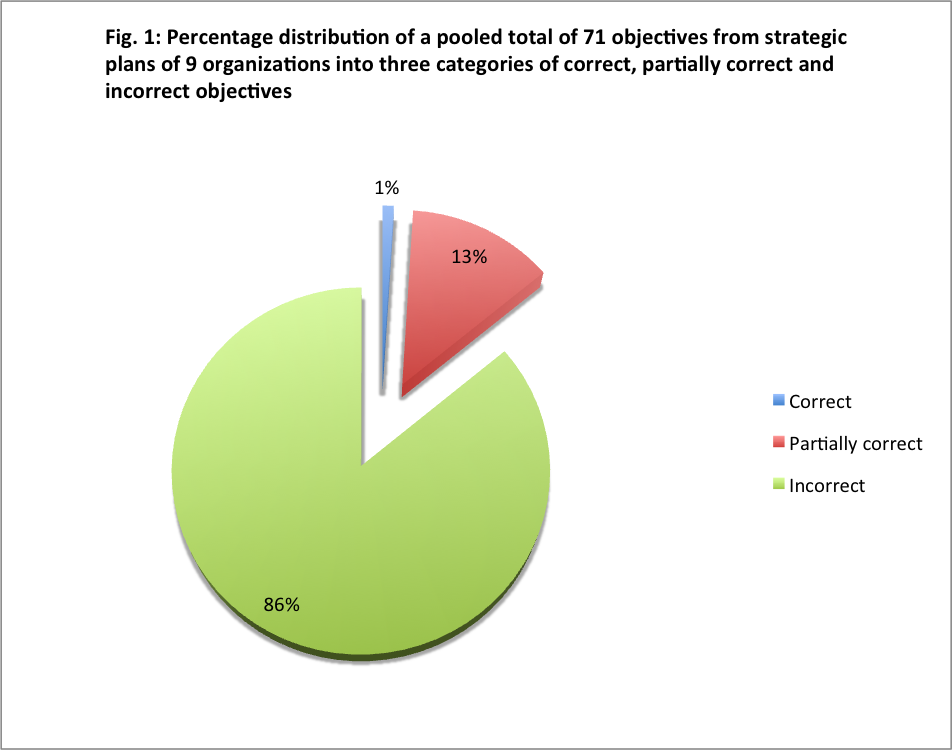How good are the Strategic Plans of public organizations?
As a result of public service reforms, strategic planning has become an essential feature of performance management in public organizations, in Tanzania, in the last couple of decades. Many organizations are now in their fourth and fifth generation of medium term strategic plans ranging in duration from three to five years with this duration having been recently standardised to five years. Since a strategic plan represents the sole organizational strategy on the basis of which an organization is not only funded but also its performance is measured, the importance of strategic plans cannot be overstated.
What makes strategic plans particularly important is not so much the strategy to be employed but rather the results to be achieved. Results form the focus of the entire organization as they represent the goals to be achieved in a medium term. Results drive and help to prioritize activities to be implemented thus optimizing resource use. A critical feature of results is that they are not found within the organization; they are found outside it where customers or service beneficiaries are. Although this is somewhat obvious, when it is considered that organizations are formed to address existing needs in society, this notion tends to elude many organizations when formulating strategic objectives.
A strategic plan is as good as its objectives, which set the goals to be achieved or services to be delivered. As such objectives determine the effectiveness of any strategic plan and therefore the organization. With experience gained so far in strategic planning, it is pertinent to ask the question, how good are strategic plans of public organizations? The answer to this question will provide insight as to how well organizations are planning and the extent to which they are effectively performing. At Development Solutions Consultancy, we have assessed a total of 71 objectives from strategic plans of 9 organizations, mostly public organizations that we were able to access through web sites and other sources. They cover the period from 2007/08 to 2016/17.
Based on the criterion of objectives being results found outside the organization and addressing the needs of intended customers or service beneficiaries, the assessment determined whether objectives were correct, partially correct or simply incorrect. Table 1 presents the results of the assessment indicating, for each organization, the period of the strategic plan, number of objectives in the strategic plan and their percentage distribution into the three assessment categories. The results show that 8 organizations had no correct objective and only one organization had 1 (10%) correct objective out of its 10 strategic objectives. Four organizations, whose strategic plans had 8, 5, 4 and 8 strategic objectives, had all the objectives incorrect. Partially correct objectives ranged from 13% to 38% while incorrect ones from 62% to 100% across organizations.
| Organization serial # | Period of Strategic Plan (SP) | Total objectives per SP | Breakdown of objectives | ||
|---|---|---|---|---|---|
| Correct | Partially correct | Incorrect | |||
| 1. | 2011/12 - 2013/14 | 8 | 0 | 3 (38%) | 5 (62%) |
| 2. | 2010/11 - 2012/13 | 8 | 0 | 0 | 8 (100%) |
| 3. | 2008/09 - 2012/13 | 7 | 0 | 1 (14%) | 6 (86%) |
| 4. | 2009/10 - 2014/15 | 5 | 0 | 0 | 5 (100%) |
| 5. | 2007/08 - 2010/11 | 8 | 0 | 1 (13%) | 7 (87%) |
| 6. | 2011/12 - 2014/15 | 4 | 0 | 0 | 4 (100%) |
| 7. | 2011/12 - 2015/16 | 13 | 0 | 4 (31%) | 9 (69%) |
| 8. | 2012/13 - 2016/17 | 10 | 1 (10%) | 0 | 9 (90%) |
| 9. | 2009/10 - 2011/12 | 8 | 0 | 0 | 8 (100%) |
| Total | 71 | 1 (1%) | 9 (13%) | 61 (86%) | |
Figure 1 below shows the results of all the objectives pooled together. It shows that of the 71 total objectives, an overwhelming 86% were incorrect, 13% were partially correct, and only 1% were correct. Overall, although sample size is small, the results indicate the need to consolidate strategic planning by improving its quality.

What does it mean in terms of organizational performance when the objectives are incorrect to this extent? This will be a subject of my next post.